Article No. 320105
Water-based, translucent primer with film preservative
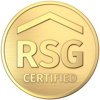

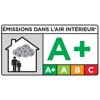
Product specifications
On delivery
The stated values represent typical product characteristics and are not to be construed as binding product specifications.
Field of application
- For use on exterior wood
- Soft and hard woods
- Dimensionally stable wood building elements: e.g. windows and doors (including their interior surfaces)
- Wood building elements with limited dimensional stability, e.g. folding shutters, matchboarding, summerhouses
- Wood building elements with no dimensional stability: e.g. fences, framework, carports, planking
- Can also be used as a thin-layer varnish for building elements that are not dimensionally stable
Properties
- Outstanding (wet) adhesion
- Good pore wetting performance
- Ready to apply by dipping or flow-coating
- Good flow characteristics on untreated and impregnated wood
- Film preserver protects against microbial damage
- Weather resistant
-
Preparation
-
Substrate requirements
The substrate must be clean, dry, free of dust, grease and loose substances, and prepared in the correct manner.
Dimensionally stable wood building elements: wood moisture content 11-15%
Wood building elements with limited or no dimensional stability: wood moisture content max. 18%
-
Preparations
If necessary, impregnate non-resistant woods with a wood preservative* (*Use biocides safely. Always read the label and product information before use).
Observe BFS Code of Practice No. 18 "Coatings on Wood and Wooden Working Materials in Outdoor Areas".
-
-
Application
-
Stir well, including during application or after a break in work.
Qualified specialist companies: brushing, dipping, flow coating, spraying.
Flow cup gun: nozzle size: 1.3 - 1.8 mm, atomiser air pressure: 1.5 - 2.5 bar.
When applying by spraying with a flow cup gun, an excess of material must be applied. Staining is not possible with this method.
Once dry, apply further coatings.
Seal opened containers well and use contents as soon as possible.
-
Application instructions
-
Check colour, adhesion and compatibility with the substrate by setting up a trial area.
Before coating technically modified woods and wood-based materials, apply the product to a trial surface and conduct a suitability test on the desired area of use.
Substances in oak may bleed, causing dark discolouration, when coated with water dilutable dispersion stains.
Apply forced drying to tannin-containing woods.
The best flow results on Accoya, oak and chestnut are achieved at a pH value of 9.0–9.5, corresponding to an additive content of 0.3–0.5% VP 20829 Additive (0366).
If the viscosity increases due to evaporation, this must be remedied with water (target viscosity: runout time approx. 23 - 27 s in 3 mm ISO cup).
Dilute with up to 10% water to improve flow properties in unfavourable conditions (elevated temperatures, low humidity). Add water to make up for any moisture lost through evaporation.
If foaming occurs in the flow coating system, it is recommended to add 0.2-1.0% VP 9325 defoaming agent - strength 2.
The system finder on our website www.remmers.com contains coating recommendations for specific wood types to be used when treating windows and exterior doors.
-
Drying
Can overcoated: after approx. 2.5 hours
(at 23 °C and 50% RH)
If forced drying is used, can be overcoated: after approx. 90 minutes
(20 minutes dripping time/50 minutes drying phase (35 – 40 °C)/20 minutes cooling phase) -
Thinning
Ready to use;
if necessary with water (max. 10%).
-
Working tools / cleaning
-
Brush, dipping tank, flow coating facility, spraying equipment, flow cup gun
-
Clean tools with water or Aqua RK-898 Cleaning Concentrate immediately after use.
Ensure that any residue from cleaning is disposed of correctly.
-
Storage / shelf life
-
If stored unopened in its original container in a cool, dry place and protected against frost, the product will keep for at least 12 months.
-
Usage
-
80 - 120 ml/m² per coat
-
Depending on the processing method, wood type and wood surface.
-
General information
-
On planed larch and softwoods with a high resin content, the coating may have reduced adhesion and resistance to weathering. This is especially the case on horizontal year rings, knots and areas of winter growth that are high in resin. Maintenance must be carried out more frequently on these surfaces.
The only remedy for this is pre-weathering or very coarse sanding (P80).
If these wood types are rough-sawn, considerably longer maintenance intervals are to be expected.Observe the information sheets “Upkeep and Maintenance of Dipping Tanks and Flow Coating Facilities” and “Information on Workplace Hygiene”.
-
-
Disposal instructions
-
Larger quantities of leftover product should be disposed of in the original containers in accordance with the applicable regulations. Completely empty, clean containers should be recycled. Do not dispose of together with household waste. Do not allow to enter the sewage system. Do not empty into drains.
-
-
Safety / regulations
-
For further information on the safety aspects of transporting, storing and handling the product and on disposal and environmental matters, please see the current Safety Data Sheet.
-









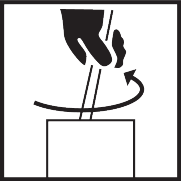
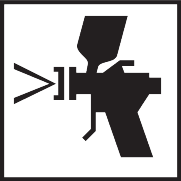

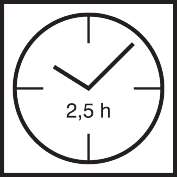
















![Induline LW-722 [eco] Induline LW-722 [eco]](https://m.remmers.com/gebindeabbildungen/2400w/49446.png?w=100&version=1)
